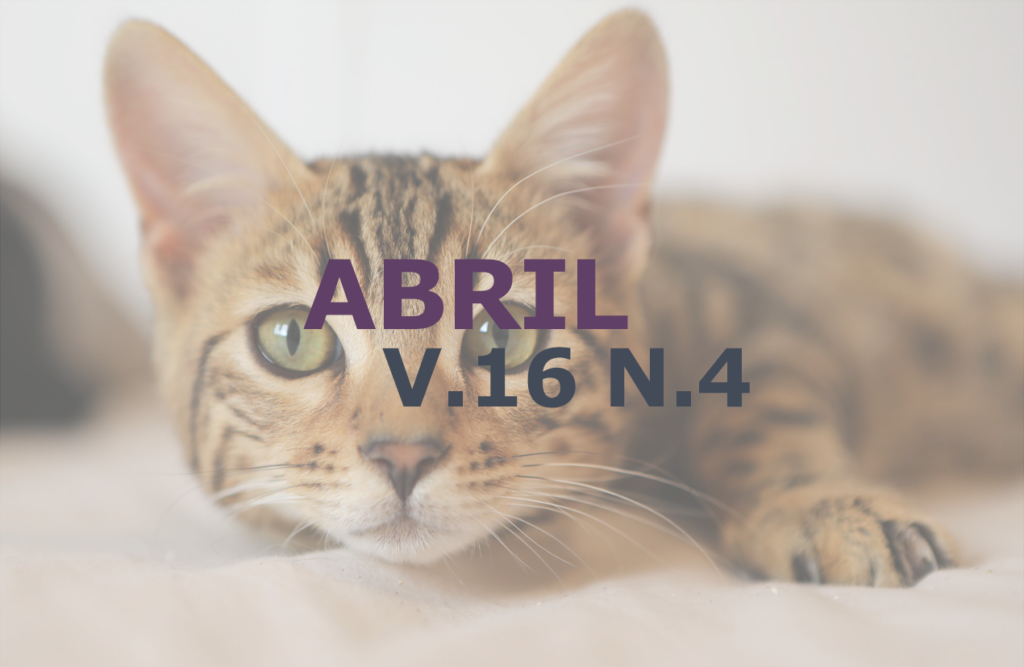Pitiosis in a pregnant mare in the Recôncavo da Bahia: Case report
DOI:
https://doi.org/10.31533/pubvet.v16n04a1086.1-9Keywords:
Triacinolone acetonide, equine, P. insidiosumAbstract
Pythiosis is a granulomatous, exsutadative, and highly itchy skin disease caused by the etiological agent Pythium insidiosum that can affect several species, including some domestic, wild animals, and also humans. P. insidiosum is an oomycete, classified as a zoosphoric, thermophilic, being a common inhabitant of the soil and wetlands. The aim of this study was to report a clinical case of pythiosis treated at the University Hospital of Veterinary Medicine at the Federal University of Recôncavo da Bahia (UFRB). A Mangalarga mare, with five years of age, with 380 kg of body weight, and with an estimated gestation between 9 and 10 months. In the initial clinical evaluation, it was found the presence of pruritic skin lesions suggestive of pythiosis, with the presence of “kunkers” and with filamentous secretion. The diagnosis was confirmed by cytological examinations through imprint and direct swab of the lesions, stained by panopticon and by maceration and clarification with 10% potassium hydroxide. In the hematological examination, the animal presented in addition to anemia, intense leukocytosis (54,750 µL) due to neutrophilia, lymphocytosis, eosinophilia and monocytosis. Due to advanced pregnancy, it was opted for the therapy with Pitium-vac® immunotherapy, for daily wound management, intramuscular penicillin antibiotic therapy, anti-inflammatory therapy with meloxican, intramuscular, vitamin supplements, orally, and the use of a restraining collar. to avoid self-mutilation. During the hospitalization period, childbirth took place, and thereafter, treatment with triacinolone acetonide (50 mg weekly) was instituted once a day, every 8 days, for a total of 3 doses and intramuscularly. The animal remained hospitalized for 130 days, and the complete remission of the lesions was observed after 230 days of initiation of treatment. Pythiosis should be considered a differential diagnosis of granulomatous skin diseases in horses in the Recôncavo da Bahia, the treatment instituted was effective, with a significant recovery after the application of triacinolone acetonide.
Downloads
Published
Issue
Section
License
Copyright (c) 2022 Bruno Cunha Ribeiro, Ana Paula Cardoso Peixoto, Danielle Nobre Santos Pinheiro, Thiago Sampaio de Souza

This work is licensed under a Creative Commons Attribution 4.0 International License.
Você tem o direito de:
Compartilhar — copiar e redistribuir o material em qualquer suporte ou formato
Adaptar — remixar, transformar, e criar a partir do material para qualquer fim, mesmo que comercial.
O licenciante não pode revogar estes direitos desde que você respeite os termos da licença. De acordo com os termos seguintes:
Atribuição
— Você deve dar o crédito apropriado, prover um link para a licença e indicar se mudanças foram feitas. Você deve fazê-lo em qualquer circunstância razoável, mas de nenhuma maneira que sugira que o licenciante apoia você ou o seu uso. Sem restrições adicionais
— Você não pode aplicar termos jurídicos ou medidas de caráter tecnológico que restrinjam legalmente outros de fazerem algo que a licença permita.





